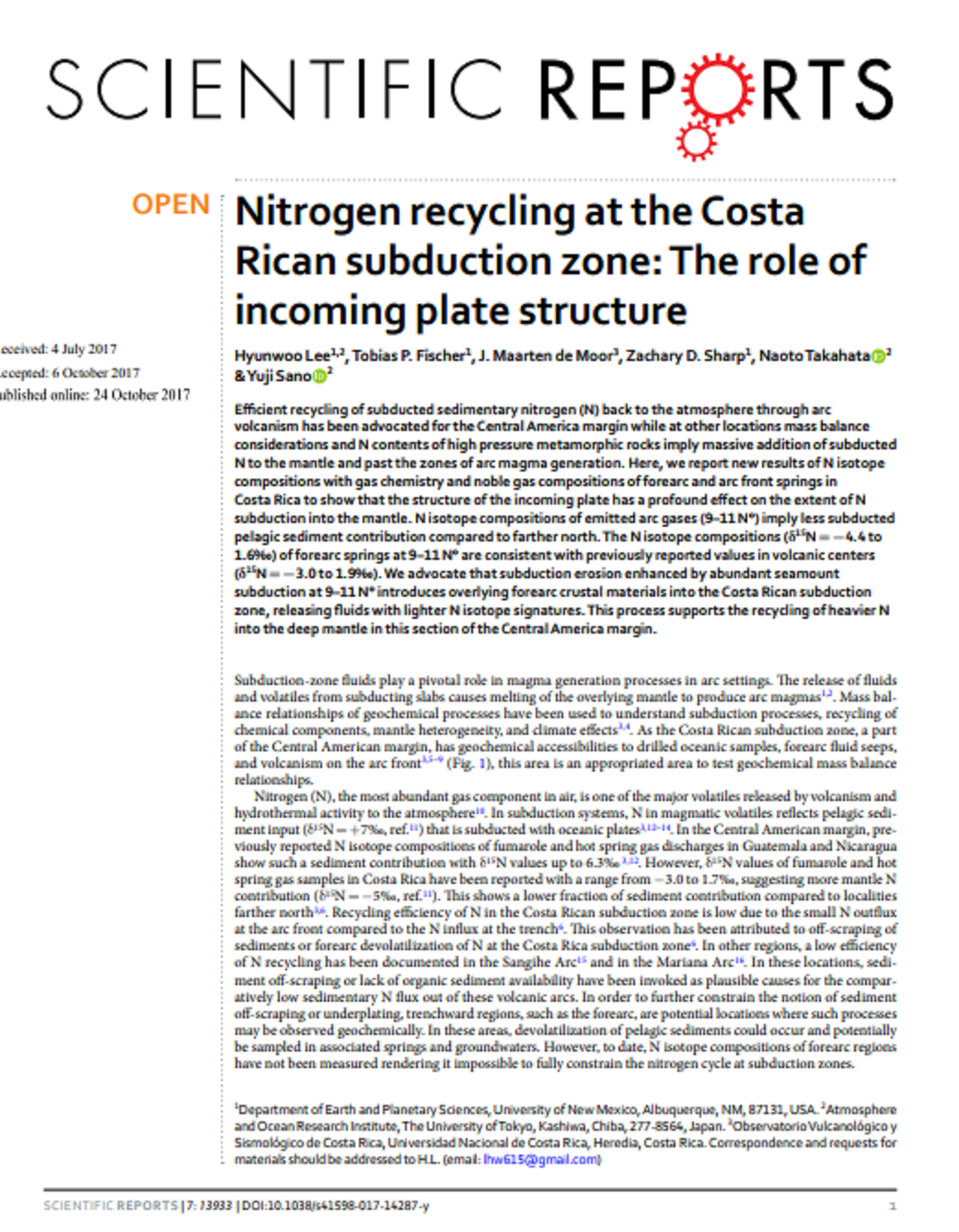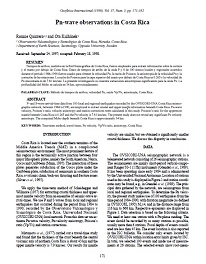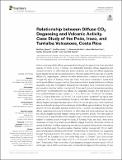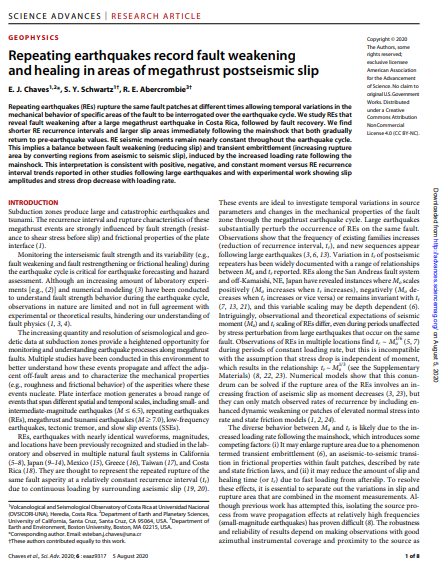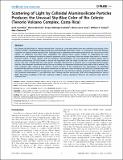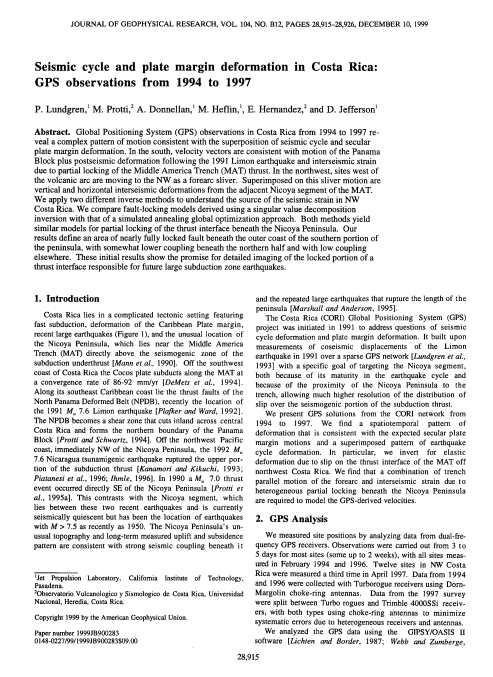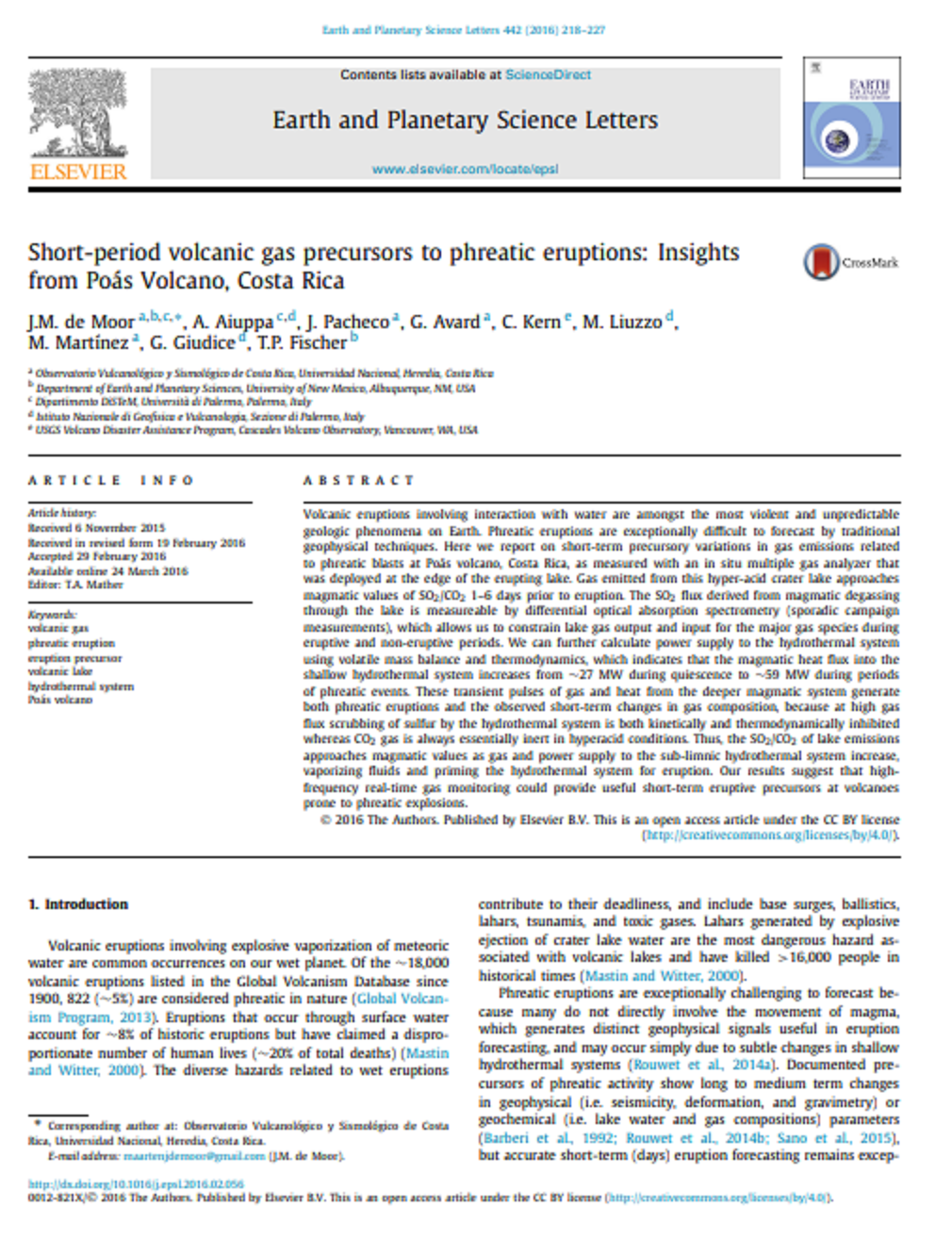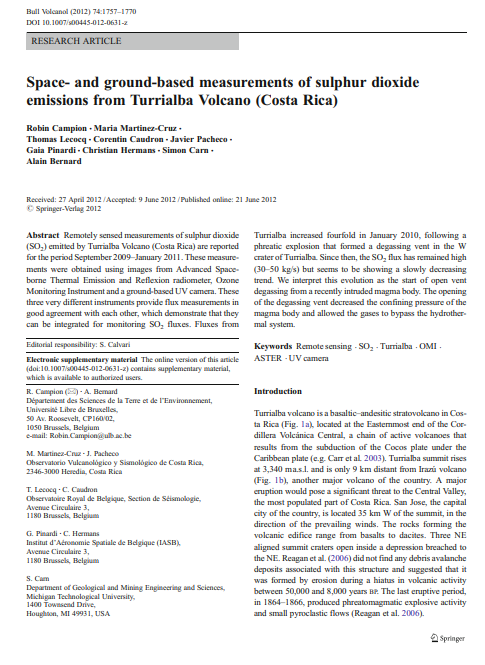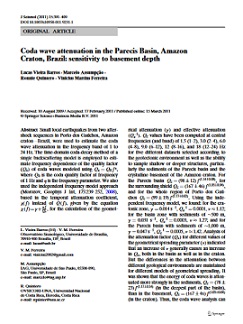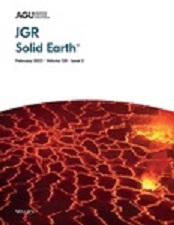Browsing Artículos científicos by Title
Now showing items 51-70 of 79
-
New insights into Kawah Ijen’s volcanic system from the wet volcano workshop experiment
(Geological Society London Special Publications, 2016-02-25)Volcanoes with crater lakes and/or extensive hydrothermal systems pose significant challenges with respect to monitoring and forecasting eruptions, but they also provide new opportunities to enhance our understanding of ... -
Nicoya earthquake rupture anticipated by geodetic measurement of the locked plate interface
(Nature Research, 2013-12-22)The Nicoya Peninsula in Costa Rica is one of the few places on Earth where the seismically active plate interface of a subduction zone is directly overlaid by land rather than ocean. At this plate interface, large megathrust ... -
Nitrogen recycling at the Costa Rican subduction zone: The role of incoming plate structure
(Springer Nature, 2017-10-24)Efficient recycling of subducted sedimentary nitrogen (N) back to the atmosphere through arc volcanism has been advocated for the Central America margin while at other locations mass balance considerations and N contents ... -
Pn-wave observations in Costa Rica
(Universidad Nacional Autónoma de México, 1998-02-18)Tiempos de arribos, medidos en la Red Sismográfica de Costa Rica, fueron empleados para extraer información sobre la corteza y el manto por debajo de Costa Rica. Datos de tiempos de arribo de la onda P y S de 100 sismos ... -
Recurrencia de sismos en el Valle Central de Costa Rica
(REVISTA GEOGRÁFICA DE AMÉRICA CENTRAL, 2018)En los periodos 1910-1912, 1951-1955 y 1990-1993 se localizaron en el Valle Central de Costa Rica sismos superficiales importantes, por su magnitud y daños causados en la población, estructura y paisaje. La recurrencia de ... -
Regional characteristics of observable foreshocks
(Seismological Society of America (SSA), 2022)Measures of foreshock occurrence are systematically examined using earthquake catalogs for eight regions (Italy, southern California, northern California, Costa Rica, Onshore Japan, Alaska, Turkey, and Greece) after imposing ... -
Relationship between Diffuse CO2 Degassing and Volcanic Activity. Case Study of the Poás, Irazú, and Turrialba Volcanoes, Costa Rica
(Frontiers in Earth Science, 2017-10-11)Active volcanoes exhibit diffuse gas emanations through the ground, the most abundant species of which is CO2. However, the relationship between diffuse degassing and volcanic activity is not often clear and some volcanoes ... -
Renewed Explosive Phreatomagmatic Activity at Poás Volcano, Costa Rica in April 2017
(Frontiers in Earth Science, 2018-10-16)Phreatic and phreatomagmatic eruptions at volcanoes often present no short termprecursory activity, making them a challenge to forecast. Poás volcano, Costa Rica, exhibits cyclic activity with phreatic and some phreatomagmatic ... -
Repeating earthquakes record fault weakening and healing in areas of megathrust postseismic slip
(American Association for the Advancement of Sciences (AAAS), 2020)Repeating earthquakes (REs) rupture the same fault patches at different times allowing temporal variations in the mechanical behavior of specific areas of the fault to be interrogated over the earthquake cycle. We study ... -
Los riesgos y desastres naturales en la cotidianidad de los barrios de Lepanto, Puntarenas, Costa Rica
(Universidad Nacional, Costa Rica., 2018)El presente artículo nace en el marco del proyecto “Educación para la prevención de riesgos naturales” utilizado como parte del proceso de extensión y docencia de Instituto de Investigación Observatorio Vulcanológico y ... -
Scattering of light by colloidal aluminosilicate particles Produces the unusual sky-blue color of Río Celeste (Tenorio Volcano Complex, Costa Rica)
(2013-09-18)Río Celeste (Sky-Blue River) in Tenorio National Park (Costa Rica), a river that derives from the confluence and mixing of two colorless streams-Río Buenavista (Buenavista River) and Quebrada Agria (Sour Creek)-is renowned ... -
Seismic cycle and plate margin deformation in Costa Rica: GPS observations from 1994 to 1997
(American Geophysical Union, 1999-12-10)Global Positioning System (GPS) observations in Costa Rica from 1994 to 1997 reveal a complex pattern of motion consistent with the superposition of seismic cycle and secular plate margin deformation. In the south, velocity ... -
Seismogenic zone structure beneath the Nicoya Peninsula, Costa Rica, from three-dimensional local earthquake P- and S-wave tomography
(Geophysical Journal International, 2006)The subduction plate interface along the Nicoya Peninsula, Costa Rica, generates damaging large (Mw > 7.5) earthquakes. We present hypocenters and 3-D seismic velocity models (VP and VP/VS) calculated using simultaneous ... -
Short-period volcanic gas precursors to phreatic eruptions: Insights from Poás Volcano, Costa Rica
(Elsevier, 2016-03)Volcanic eruptions involving interaction with water are amongst the most violent and unpredictable geologic phenomena on Earth. Phreatic eruptions are exceptionally difficult to forecast by traditional geophysical techniques. ... -
Sismo de Capellades 01 diciembre 2016, Cartago, Costa Rica
(REVISTA GEOGRÁFICA DE AMÉRICA CENTRAL, 2018)En este trabajo se hace una descripción de la fuente sísmica del sismo de Capellades, provincia de Cartago, Costa Rica, del 1 de diciembre de 2016, 00:25:20 hora UTC. Se estudian los parámetros de la fuente, centroide, ... -
Space- and ground-based measurements of sulphur dioxide emissions from Turrialba Volcano (Costa Rica)
(Springer Verlag, 2012-06-21)Remotely sensed measurements of sulphur dioxide (SO2) emitted by Turrialba Volcano (Costa Rica) are reported for the period September 2009–January 2011. Thesemeasurements were obtained using images from Advanced Spaceborne ... -
The 27 February 2022 Lop Nor earthquake: detectability, location, and discrimination
(Seismological Society of America (SSA), 2022)A seismic event with mb 4.8 (Mw 4.2) was detected close to the Chinese Lop Nor nuclear test site on 27 February 2022. Waveforms recorded at regional and far regional distances in central Asia indicate greater likeness with ... -
The geometry of the Wadati-Benioff zone under southern Central America and its tectonic significance: results from a high-resolution local seismographic network
(Elsevier, 1994)We present here a detailed geometry of the Wadati—Benioff zone under Costa Rica, obtained from seismicity recorded by a dense local seismographic network jointly operated by the Costa Rica Volcanological and Seismological ... -
The intraplate Porto dos Gaúchos seismic zone in the Amazon craton — Brazil
(Elsevier, 2009-01-15)The largest earthquake observed in the stable continental interior of the South American plate occurred in Serra do Tombador, Mato Grosso state — Brazil, on January 31, 1955 with a magnitude of 6.2 mb. Since then no other ... -
The March 25, 1990 (Mw=7.0, ML=6.8), earthquake at the entrance of the Nicoya Gulf, Costa Rica: Its prior activity, foreshocks, aftershocks, and triggered seismicity
(American Geophysical Union, 1995-10-10)On March 25, 1990 a large earthquake (Mw = 7.0, ML = 6.8) occurred at the entrance of the Nicoya Gulf, Costa Rica, at 1322:55.6 UTC, producing considerable damage in central Costa Rica and generating much interest about ...


